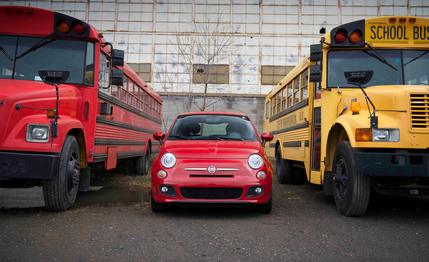 Long-Term Road Test Wrap-Up
Long-Term Road Test Wrap-Up
The Fiat 500, or Cinquecento, is not only the first Italian car to finish our long-term, 40,000-mile evaluation*, it’s also the first new Fiat available in the U.S. since the company packed up shop here in 1984. Introduced as a 2012 model following the company’s tie-up with Chrysler, the 500 is a frothy little cappuccino of a hatchback. And if the arduous 17 months it took to complete our test is any indication, the sheer vastness of what is the world’s second-largest car market is the greatest challenge this car faces.
In August 2011, when the 500 entered our fleet, it was available as a three-door only and came in Pop, Sport, Lounge, and designer Gucci trims. We went with Sport, of course, in which the 500’s inherent cuteness is tempered by some athleticism. A healthy base price of $18,000, exactly two grand more than the Pop’s, included unique fascias, 16-inch aluminum wheels, and a firmer suspension. Cruise control, stability control, halogen headlights and fog lights, a Bose audio system with USB and hands-free connectivity, and a multitude of airbags also came standard. We passed on the lethargic six-speed automatic transmission and stayed with the standard five-speed manual, saving $1250 and preserving some of our dignity in the process.

Also included in our car’s $19,100 as-tested price was $500 Rosso Brilliante paint, the $400 Safety and Convenience package (alarm, automatic climate control, and a temporary spare), and the $200 Safety and Sound package, which netted satellite radio. So it came to us well equipped, with fold-down rear seatbacks and a usable hatch that could hold a decent amount of stuff (up to 30 cubic feet). But we soon realized we wanted more.
The 500’s 1.4-liter SOHC four-cylinder develops just 101 horsepower at 6500 rpm and 98 pound-feet of torque at a lofty 4000. Although saddled with only 2427 pounds—124 less than the last Mini Cooper we tested—the initial results were a 9.9-second amble to 60 mph and 17.5 seconds at 78 mph in the quarter-mile. (An automatic 500C convertible we tested was more than a second slower in both measures.) Those figures improved to 9.7 and 17.1 seconds, respectively, at the conclusion of our test, but the car still felt painfully slow when accelerating to highway speeds. And forget about attempting to pass on rural two-lanes.
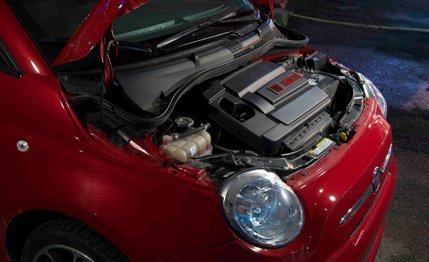
Despite the 1.4’s small capacity and our Fiat’s EPA city/highway ratings of 30/38 mpg, the lack of a sixth gear and the frequency with which our 500’s accelerator nailed the floorboard limited it to 33 mpg overall. That’s about average for most of the B-segment cars we’ve tested, as is the 340-mile range from the 10.5-gallon tank.
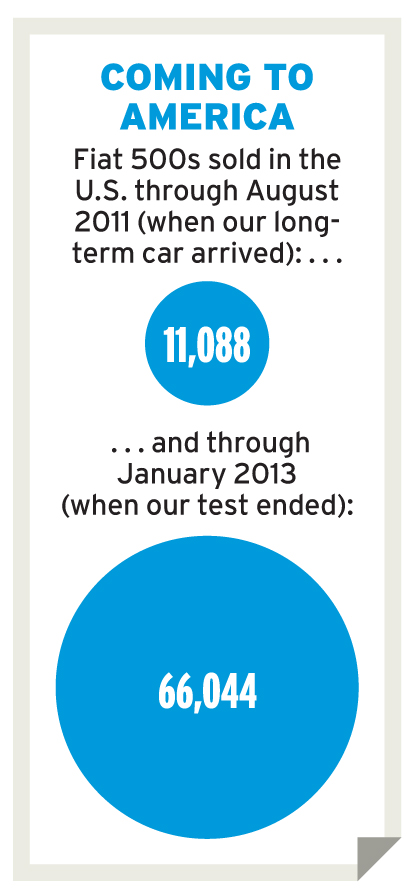
Not that many of us were eager to take the little guy on extended voyages. The majority of its outings were confined to the Detroit area, save for occasional jaunts to northern Michigan, Chicago, Ohio, and Wisconsin. Sheer lack of space was an obvious factor: At 139.6 inches, the 500 is a half-foot shorter than a Mini Cooper. Pack light and be on good terms with your car poolers.
Another issue keeping the Fiat close to home was its stubby 90.6-inch wheelbase, which made it far more adept at zigzagging in rush-hour traffic than bucking through 1000-mile days on the interstate. And the 500 received good marks for its ability to make do with parking lots’ leftover scraps.
Decent lateral grip (0.85 g) and linear steering lent the car a fun, tossable feel at low speeds, with adhesion improving slightly over the course of our test as the skinny Pirelli Cinturato P7 all-seasons wore in. Respectable stopping performance from 70 mph also improved, dropping from 175 feet initially to 171 at the 40,000-mile mark.
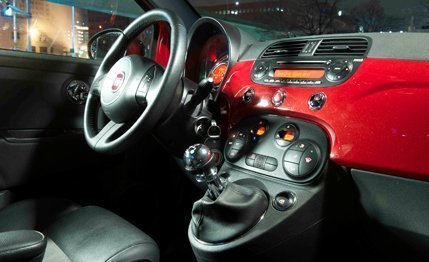 rants and raves
Tony Swan
rants and raves
Tony SwanBut the 500 never fully cooperated when we tried to drive it hard. The superlight clutch pedal offered all the resistance of overcooked linguine, and one logbook comment deemed the shifter to be “possibly the worst in any modern car.” Commenters left colorful, unprintable notes about the tepid throttle response as well as excessive wind and tire noise, large blind spots, and a ride that often crashed over bumps. High winds turned our morning commutes into wrestling matches with the steering wheel.
Gripes about the interior focused on the lack of a telescoping steering column and a raised seating position that places the driver on top of the pedals. Ultra-comfy front seats sacrificed lateral support for additional padding, and the hip, concentric gauge pod can be hard to decipher. The confounding media interface and small center display were additional quirks that started out as novelties and wound up as annoyances. Technical editor K.C. Colwell summed it up well: “I wish this car had more redeeming qualities.”
To accrue more miles, we dispatched the Fiat to our West Coast base of operations for a few months, with the plush seats saving our backsides on the long to-and-fro drives. Pirelli Snowcontrol Serie II winter tires went on the OE wheels to get the little bugger over the Rockies and back in the winter months.
Fortunately, and to our surprise, we never got to know our dealership’s service tech on a first-name basis. All problems were covered by the standard warranty and were limited to the tightening of a loose handbrake and the replacement of an LED license-plate light assembly and a blown fuse for the 12-volt power outlet. Fiat even recalled and replaced the spare-tire lug wrench.
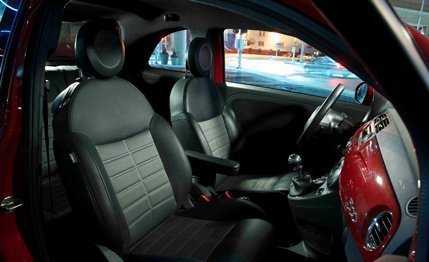
Service costs were minimal, too, largely because Fiat included free scheduled maintenance for three years or 36,000 miles as a promotional offer on 500s sold before January 1, 2012. This coverage saved early buyers nearly $500 in scheduled service visits, including three basic oil changes/inspections and two more-detailed jobs at 15,000 and 32,000 miles. Our final, 40,000-mile service for a standard oil change was outside of the promotion and cost us $51. With Fiat’s fledgling dealer network still ramping up, actually getting to our closest service center (about 50 miles away) was the biggest hassle until a new outlet opened closer to home.
We initially joked that our wee paisano might fall victim to an inattentive driver in a big truck, but the chuckles ended when a Dodge Dakota pickup actually did try to back over it in traffic, impaling the 500’s bumper cover, passenger-side fog light, and washer-fluid reservoir with its frame-mounted hitch. When confronted, the truck’s passenger noted that they’d have seen us if we “weren’t driving that little shitbox.” That cultural exchange cost us a trip to the body shop and $1088 in repairs.
Our stint with the 500 confirmed many of our first assumptions: This Fiat is not for everyone, especially not those who need to get anywhere quickly or far away, or with full-size adults in back. And that there are better ways to scoot around town. The small-car market is deep with talent these days, and our sensible selves still favor the Honda Fit, which does nearly everything better than the Fiat for similar money.
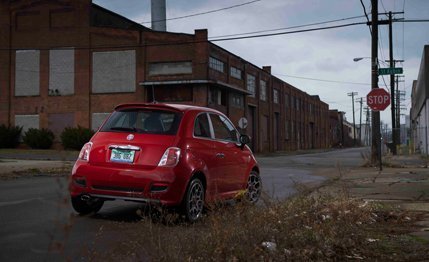
But the 500 turns heads in a way that only an Italian machine can, and our example was largely trouble-free, defying our other first assumption. Despite being a tad pricey and less efficient than we had envisioned, the 500 works as the city runabout it was designed to be.
Fiat has introduced several other Cinquecento variants in the short time the car has been on sale here, too, including the 500C targa, 135-hp Turbo, 160-hp Abarth, and electric 500e. All are charming and approachable, with personalities that delight in small doses. Our driving styles were a little too demanding for our 500, but this country’s stylish, urban markets are starting to clutch the diminutive car to their breast. America is a big place, after all.
*Our Italian long-termer 1988 Alfa Romeo Milano lit itself on fire and then shot a rod through its engine block.